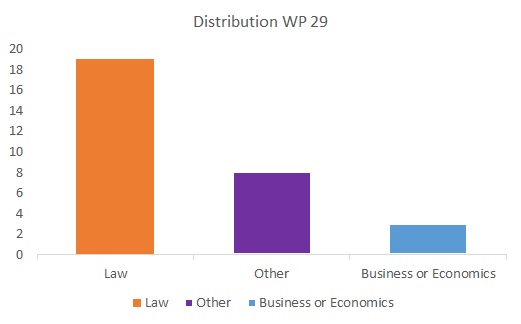During last weekend’s summit meeting
of Asia-Pacific leaders in Peru, President Obama made the case that failure to
sign on to TPP would “undermine our position across the region”. It would mean
that if the US would not sign on the trade agreement, China would assert more
leadership in the Asia-Pacific and opening a way to negotiate trade rules.
Trade patterns between
countries underpin the economic diplomacy behind any potential trade agreement.
That too for the TPP. If we focus on one area in which most TPP members have an
interest for future trade, namely services, that concern of changing trade
leadership may be true.
The picture below shows the
so-called Trade Complementarity Index (TCI) for both the US and China with
regards to all TPP members (excluding US). This index provides us with an idea
how much the exports and imports of the US and China separately match with other
TPP members’ needs, or are complementary. A high index means a good “fit” in
terms of trade relations and indicates a great potential for a trade agreement
between members.
Note that this picture tells us
the trade complementarity of cross-border trade in services or what others have
called “digital deliverable services”, which are services that are traded over the
Internet. Incidentally, TPP has the standard when it comes to the cross-border
flow of data, a factor that reinforces trade in digital services.
The pattern that arises is that initially the gap between the
US’s and China’s trade match with other TPP partners in services trade narrowed.
However, since 2008 it has widened pointing out that the US has found better
trade complementarity with other TPP members. Around that time the US entered
the trade talks.
Whether the widening gap is really due to US involvement
remains to be seen, but what clearly stands out is that at some point China was
as much a good fit for trading services with these TPP partners as the US was.
Yet, already before the US jumped in the negotiation talks,
China’s services trade complementarity diminished in the region. This downward
trend seems to be of a longer nature, which may be due to China’s regulations
in the digital economy over these years. If that’s the case, it puts a serious
question whether China can lead the region in terms of services trade, an item
the Chinese government is eager to capitalize on.
On the one hand, therefore, in a scenario that the US won’t
ratify the trade pact, nothing tells us that this pattern could return. This
would reinforce China’s role in the region regarding services trade that can be
traded over the internet and indeed may therefore assert its influence to set
the rules in this area.
On the other hand, Chinese decline of the trade pattern in digital
delivered services is no good recipe to underpin China’s potential future role
in the region. If China was serious about fortifying these trade relations, it
should start thinking about some of its digital regulatory policies that enable
digital services trade.

